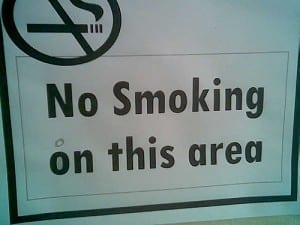 Prepositions and prepositional phrases are important elements of written English because they present a method by which a writer can show relationships between different ideas and make their communications more exact and specific.
Prepositions and prepositional phrases are important elements of written English because they present a method by which a writer can show relationships between different ideas and make their communications more exact and specific.
In this article, we show you a really simple method for identifying prepositions and prepositional phrases.
Prepositions
Prepositional phrases always begin with a preposition: a relationship or directional word that links nouns, pronouns, verbs and phrases to one another. We have covered prepositions in some detail in an earlier article: A list of common prepositions. If you are unsure as to what prepositions are, that would be a good place to start; it is important that you are familiar with them, as a great deal of your aptitude as a writer lies in your ability to recognize and use prepositions and prepositional phrases.
Phrases
Once the preposition has been applied, it is developed in further in the context of a phrase. If you are unsure as to what phrases look like, see our article: what are phrases?
Prepositional phrases
Given that prepositional phrases always begin with a preposition, the first step to identifying the prepositional phrase is to find the preposition.
Identifying prepositions and prepositional phrases
Let’s look at an example:
“The vegetables in the refrigerator were green with mold.”
 To identify the prepositional phrase, you should first find the preposition. In our example, the preposition is the word “in.” So we now know that the prepositional phrase starts at the word “in.”
To identify the prepositional phrase, you should first find the preposition. In our example, the preposition is the word “in.” So we now know that the prepositional phrase starts at the word “in.”
 Find the noun or pronoun that ends the prepositional phrase. So, we start with “in” and keep reading. We know that the word “the” is an adjective, so the prepositional phrase doesn’t end there. We keep reading and encounter the word “refrigerator,” a noun. We know that prepositional phrases end with a noun, so we stop. We now have our prepositional phrase:
Find the noun or pronoun that ends the prepositional phrase. So, we start with “in” and keep reading. We know that the word “the” is an adjective, so the prepositional phrase doesn’t end there. We keep reading and encounter the word “refrigerator,” a noun. We know that prepositional phrases end with a noun, so we stop. We now have our prepositional phrase:
“The vegetables in the refrigerator were green with mold.”
 If you want to go one step further, you can look at the relationship created by the preposition. To do this, you need to find the other noun/pronoun with which “in the refrigerator” creates a relationship. To do this, you should ask yourself, “who or what in the refrigerator?” The answer? The vegetables in the refrigerator.
If you want to go one step further, you can look at the relationship created by the preposition. To do this, you need to find the other noun/pronoun with which “in the refrigerator” creates a relationship. To do this, you should ask yourself, “who or what in the refrigerator?” The answer? The vegetables in the refrigerator.
Let’s look at another example.
“I arose from bed every morning before daybreak.”
“before”
 Identify the noun or pronoun that ends the prepositional phrase:
Identify the noun or pronoun that ends the prepositional phrase:
“daybreak”
 Identify the prepositional phrase:
Identify the prepositional phrase:
“before daybreak.”
Prepositions and prepositional phrases are extremely easy to get your head around and can help you to significantly improve your writing by providing you with a mechanism by which you can present relationships between ideas.
If you’re looking for a fun way of learning some of the common prepositions, check out our free printable preposition games.
If you have any questions about prepositions and prepositional phrases, please leave a comment and let us know.

It was helpful i got an A in english the next day. THINKS!!!
It was helpfull, i got an 98 the next day in english
Wow that easy should have looked here a long time ago.
simple to learn
should we identify the prepositional phrase based on function or form?
Are there two prepositional phrases in the second example you gave, “I arose from bed every morning before daybreak.” You identified “before daybreak,” and I get that, but I was thinking that “from bed” is also a prepositional phrase. Am I correct? And how do you handle adjacent prepositional phrases? Does the second one get absorbed? For example: After days in the hot sun, the grapes turned to raisins. Is “After days” a separate prep phrase from “in the hot sun,” or do they form one large prep phrase?
That’s cool but I’m only in third grade so I don’t know what word is a preposition. I think you should make a video on how to find a preposition.
Kalvin is a great musician and often plays shows
around the country. what is the preposition?
It’s very simple and easy to understand. Thanks
can you make it any easier?
This was very simple to learn, Thanks!